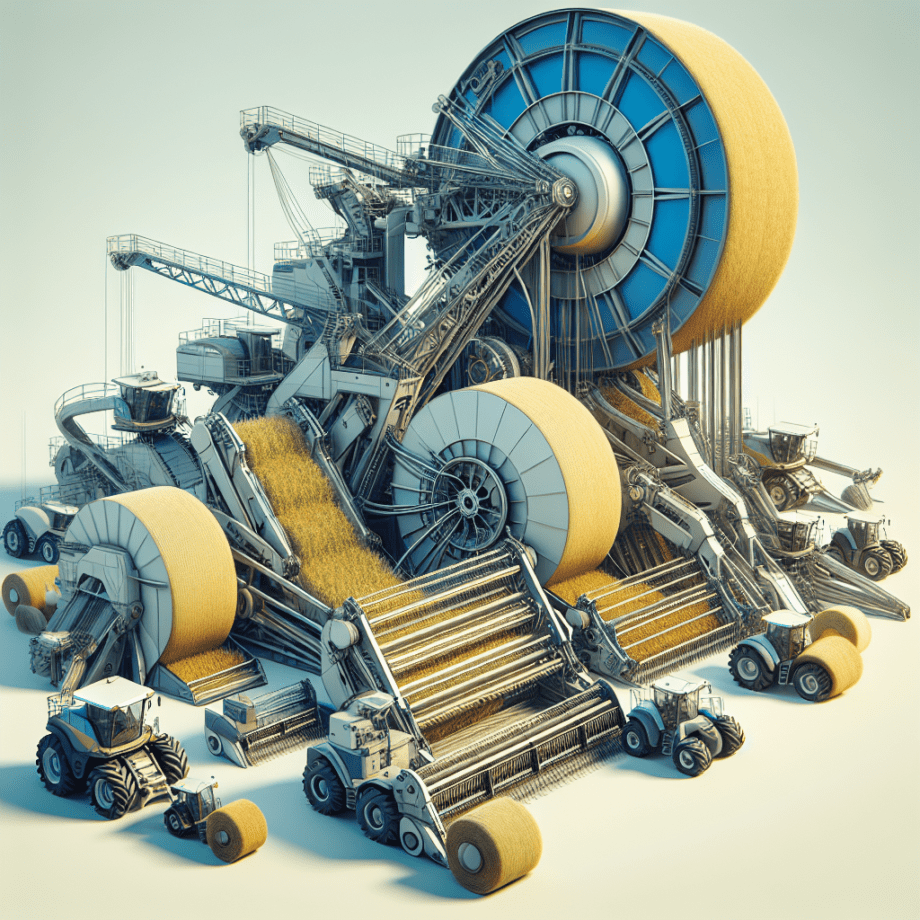Baling equipment plays a crucial role in modern agriculture, providing efficient solutions for handling and storing various types of crops. This article delves into the different types of baling equipment and their specific uses, highlighting their importance in contemporary farming practices.
Types of Baling Equipment
Baling equipment comes in various forms, each designed to meet specific agricultural needs. The primary types of balers include round balers, square balers, and large square balers. Each type has its unique features and advantages, making them suitable for different farming operations.
Round Balers
Round balers are among the most commonly used baling equipment in agriculture. They produce cylindrical bales that are easy to handle and transport. These balers are particularly popular for their ability to create dense, weather-resistant bales that can be stored outdoors. Round balers are versatile and can handle a variety of crops, including hay, straw, and silage.
The operation of a round baler involves picking up the crop from the field, compressing it into a cylindrical shape, and wrapping it with twine or netting. The size and density of the bales can be adjusted to meet specific requirements, making round balers a flexible option for farmers.
Square Balers
Square balers, also known as rectangular balers, produce bales in a rectangular shape. These balers are preferred for their ease of stacking and storage, as the uniform shape of the bales allows for efficient use of space. Square balers are commonly used for hay and straw, and they are particularly popular in regions where storage space is limited.
The process of creating square bales involves gathering the crop, compressing it into a rectangular shape, and securing it with twine or wire. Square balers are available in various sizes, from small, manageable bales to larger, more compact bales that require specialized handling equipment.
Large Square Balers
Large square balers are designed for high-capacity operations, producing bales that are significantly larger than those created by standard square balers. These balers are ideal for large-scale farming operations and commercial hay production, where efficiency and productivity are paramount.
The bales produced by large square balers are highly dense and compact, making them suitable for long-term storage and transportation. The advanced technology used in these balers ensures consistent bale quality and reduces the risk of crop loss during handling and storage.
Uses of Baling Equipment in Modern Agriculture
Baling equipment serves a variety of purposes in modern agriculture, from improving crop management to enhancing storage and transportation efficiency. The following sections explore the key uses of baling equipment in contemporary farming practices.
Crop Management
Baling equipment plays a vital role in crop management by allowing farmers to efficiently collect and store crops. By converting loose crops into compact bales, farmers can reduce the risk of crop loss due to weather conditions and pests. Baling also helps in maintaining the nutritional quality of the crops, as the compact bales protect the crops from exposure to the elements.
In addition to hay and straw, baling equipment is used for other crops such as corn stalks, soybean residue, and cotton. This versatility makes baling equipment an essential tool for diverse farming operations, enabling farmers to manage their crops more effectively.
Storage and Transportation
One of the primary benefits of baling equipment is its ability to improve storage and transportation efficiency. Bales are easier to handle and transport compared to loose crops, reducing the time and labor required for these tasks. The compact nature of bales also allows for more efficient use of storage space, whether in barns, warehouses, or outdoor storage areas.
Transportation of bales is facilitated by their uniform shape and size, which allows for easy loading and unloading. This is particularly important for commercial farming operations that need to transport large quantities of crops over long distances. The use of baling equipment ensures that crops are transported safely and efficiently, minimizing the risk of damage and loss.
Environmental Benefits
Baling equipment also offers environmental benefits by promoting sustainable farming practices. By converting crop residue into bales, farmers can reduce the need for burning or disposing of the residue, which can have negative environmental impacts. Baled crop residue can be used for various purposes, such as animal bedding, mulch, or biofuel production, contributing to a more sustainable agricultural system.
Furthermore, the use of baling equipment can help in soil conservation by reducing soil erosion. Baled crops can be used to create barriers that protect the soil from wind and water erosion, preserving soil health and fertility.
Conclusion
Baling equipment is an indispensable tool in modern agriculture, offering numerous benefits for crop management, storage, transportation, and environmental sustainability. The different types of balers, including round balers, square balers, and large square balers, provide farmers with versatile solutions to meet their specific needs. By understanding the various uses and advantages of baling equipment, farmers can enhance their productivity and contribute to a more sustainable agricultural system.
